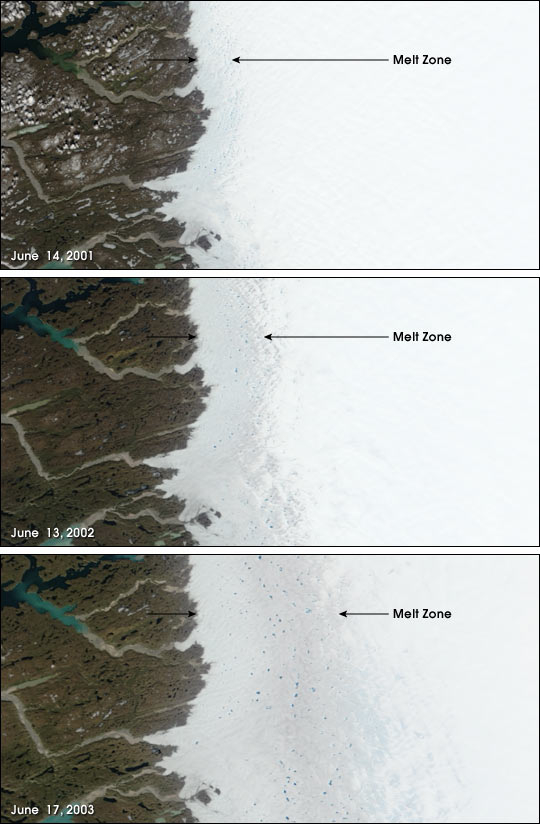


What might at first be mistaken for a series of images showing the approach of summer on the edge of the Greenland ice sheet in fact shows an increase in melting over the past several years. The three images above show the melting in June of 2001, 2002, and 2003. Since 2001, the amount of melting along the edges of Greenland’s ice cap has increased significantly.
The grey ice sandwiched between the bare ground on the left (towards the coast) and the solid white on the right (towards the island’s interior) in these true-color images indicates that the surface of the ice sheet is saturated with liquid water. This translucent area is dotted with meltwater ponds that are scattered like hundreds of blue jewels across the ice sheet’s surface. Barely visible in June 2001, the melting area increased significantly in 2002, and again in 2003, by which time it stretched farther south than in either previous year. The large images (linked above) show a large portion of Greenland’s west coast, and a reduction of snow cover from 2001 to 2003.
Scientists recently documented that the seasonal thaw along the margins of the Greenland ice sheet has been starting much earlier in the year and impacting a larger area than in the past quarter of a century. Sea ice in the region has been declining at the same time. (Read Vanishing Ice for more details.)
These images are based on observations from the Moderate Resolution Imaging Spectroradiometer (MODIS), one of five instruments aboard NASA’s Terra satellite. The sensor sees the entire surface of the Earth almost every day in 36 discreet wavelengths ranging from visible light to thermal infrared energy.
Images courtesy Jacques Descloitres, MODIS Land Rapid Response Team at NASA GSFC